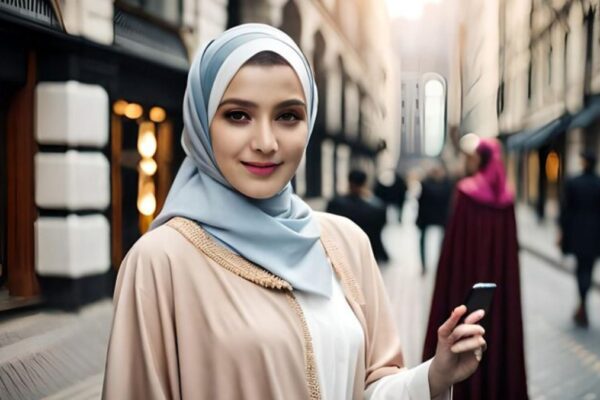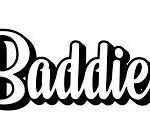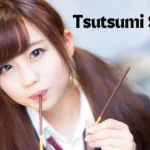Discovering “hijabhoojup” was a game-changer for me. Their hijabs are snazzy and amazingly happy with, making them ideal for ordinary wear. I feel more certain and enabled realizing I wear something that mirrors my style and values.
Hijabhoojup is a term for blending traditional hijab with modern trends, creating a unique style that reflects cultural heritage and contemporary trends. It’s famous for those seeking modest yet stylish attire, offering diverse personal expression and identity options.
This article will explore a fascinating blend of tradition and modern fashion. Let’s dive into what is about and why it’s gaining popularity worldwide.
What is hijabhoojup?
In Islamic custom, the hijab is a humble clothing regulation for Muslim ladies, regularly covering the head, neck, and chest. It represents a guarantee to unobtrusiveness and modesty, directed by strict standards illustrated in the Quran and Hadith. “hijab” starts from the Arabic root “hijab,” importance hide or cover.
Beyond its physical aspects, the hijab embodies spiritual and social dimensions, reflecting privacy, respect, and dignity values. It is worn voluntarily to express faith and identity, fostering a sense of belonging within Muslim communities worldwide. The diversity of hijab styles and interpretations reflects cultural variations while maintaining its core principles across different societies and historical contexts.
History of Hijabhoojup – learn about it!
Hijab design has advanced altogether since the beginning of time, reflecting social, social, and political changes. At first, hijab styles were affected by local customs and pragmatic contemplations, adjusting to climatic circumstances and cultural standards. Over centuries, as Islamic societies interacted with different cultures through trade and conquest, hijab styles diversified, incorporating elements from various civilizations.
During the middle age time frame, the hijab advanced further with the impact of Persian, Byzantine, and Ottoman styles, frequently fluctuating in texture, variety, and ornamentation in view of financial status and territorial traditions. In the twentieth 100 years, we saw huge changes in hijab design, impacted by worldwide style and developments for ladies’ freedoms. Current hijab styles range from conventional structures to contemporary understandings, frequently mixing social legacy with individual articulation and style.
Cultural Significance of Hijabhoojup – Embrace Diversity and Understanding !
Hijabhoojup Across Cultures
Hijabhoojup holds diverse cultural significance, serving not only as a symbol of modesty but also as a representation of cultural identity and personal choice. Across various regions and communities, its styles vary, reflecting unique interpretations of modesty and religious beliefs. For many Muslim women, wearing hijabhoojup is a way to adhere to their faith’s principles of modest dress while expressing their individuality through fashion.
Historical Evolution of Hijabhoojup
Historically, hijabhoojup traces its roots through ancient veiling practices in civilizations across the Middle East and beyond. These practices evolved, influenced by cultural exchanges and societal norms, adapting to the contemporary interpretations seen today. From being a symbol of social status and religious adherence to becoming a statement of cultural pride and personal expression, hijabhoojup continues to evolve, embracing modern fashion trends while maintaining its deep-rooted cultural significance.
Hijabhoojup Fashion Tips for Different Occasions!
Hijab Styles for Weddings and Gatherings
- Weaved Hijab: Pick a hijab with sensitive weaving or embellishments to add tastefulness.
- Silk or Silk Hijab: Pick sumptuous textures like silk or silk for a refined look.
- Articulation Pins or Clasps: Utilize enhancing pins or pins to decorate and hoist your hijab style.
- Undercap or Ninja Hijab: Consider wearing an undercap or ninja hijab style for a sleek and polished appearance.
- Neutral Colors: Stick to neutral or muted colors that complement your outfit without overpowering it.
Casual Everyday Hijab Looks
- Cotton or Jersey Hijab: Opt for comfortable fabrics like cotton or jersey for everyday wear.
- Simple Wrap Styles: Choose easy and quick wrap styles such as the primary or side drape.
- Printed or Designed Hijabs: Trial with printed or designed hijabs to add tone or interest to your outfit.
- Lightweight Textures: During hotter climate, pick lightweight textures that permit breathability.
- Extras: Utilize regular embellishments like headbands or pins to get your hijab and add an individual touch.
FAQs:
What is the distinction between a hijab and a burqa?
A hijab is a headscarf Muslim ladies wear that covers their hair, neck, and occasionally the shoulders, leaving the face noticeable. A burqa is a full-body covering with a lattice screen over the eyes, worn chiefly in Afghanistan and portions of Pakistan.
What is the difference between hijab, hijoop, and hijabhoojup?
The hijab customarily alludes to a headscarf Muslim ladies wear to cover their hair, neck, and once in a while the upper chest. Hijoop consolidates unobtrusive attire past the headscarf, like baggy pieces of clothing. Hijabhoojup combines both concepts, emphasizing the integration of modest clothing with contemporary fashion trends.
Is wearing hijabhoojup mandatory for Muslim women?
The necessity to wear a hijab shifts among Islamic translations and individual convictions. For certain’s motivations, it is a severe responsibility; for others, it is a singular choice or social practice.For a few’s motivations, it is a severe responsibility; for others, it is a singular choice or social practice.Hijabhoojup, hence, addresses a different scope of practices and translations inside the Muslim people group.
How can non-Muslims respectfully incorporate hijabhoojup into their wardrobe?
Non-Muslims interested in wearing hijabhoojup can do so by understanding its cultural and religious significance. They should approach it with respect and sensitivity, appreciating its role as a symbol of modesty and identity within the Muslim community.
What are some common misconceptions about hijabhoojup?
Misconceptions include viewing hijabhoojup solely as a symbol of oppression or lacking agency. In reality, many women wear hijabhoojup as a personal expression of faith, identity, and empowerment. Recognizing the diversity of styles and interpretations across different cultures is also important.
How can hijabhoojup contribute to fashion inclusivity and diversity?
Hijabhoojup challenges traditional beauty standards and promotes inclusivity by celebrating diverse self-expression and modest fashion formsIt urges originators and brands to take care of a more extensive scope of social and strict inclinations, encouraging a more comprehensive design industry.
Conclusion:
Hijabhoojup is a style that consolidates unobtrusive dress, like a hijab (headscarf), with trendy decisions. It’s a way for individuals, frequently Muslim ladies, to dress unobtrusively while communicating their own style.






